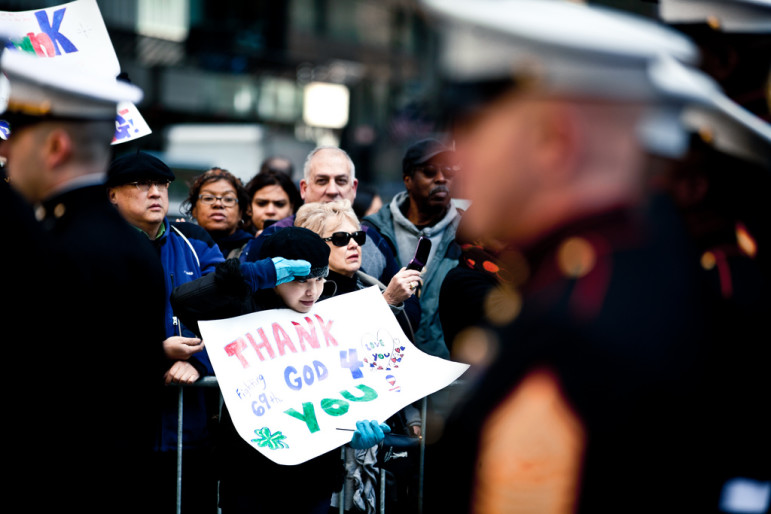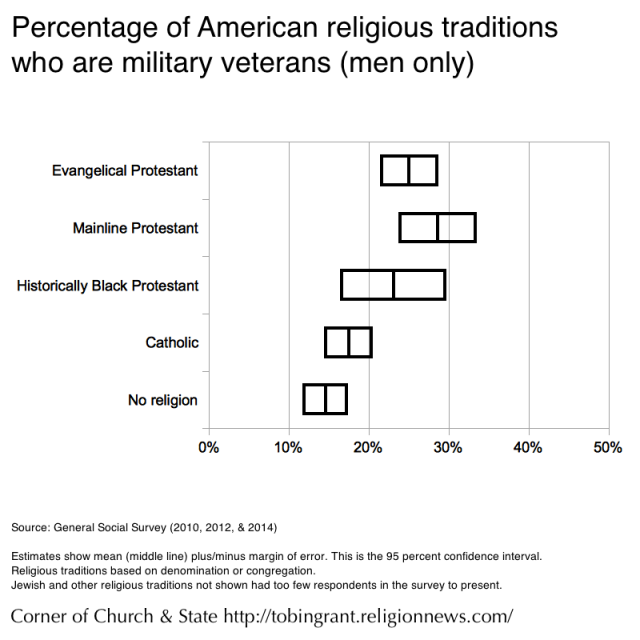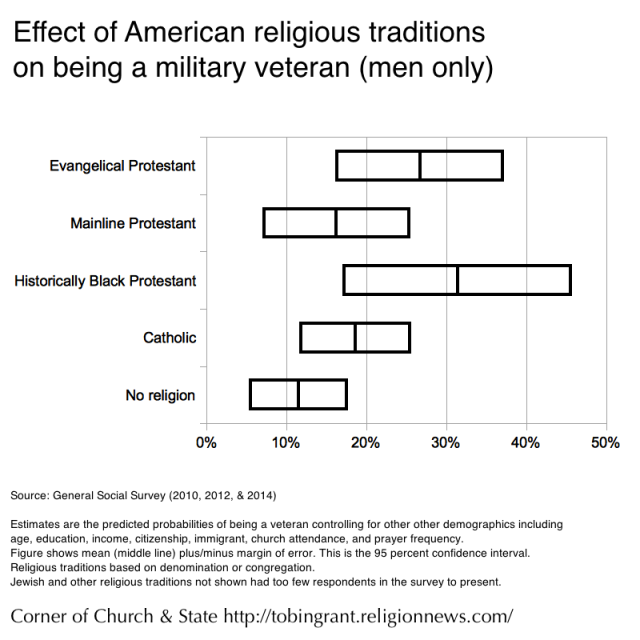About one-in-five religious Americans are veterans. This is about twice the proportion found among the “nones.”
According the most recent General Social Surveys (2010, 2012, & 2014) around 20 percent of men and two percent of women have served in the military. Veterans are most common in Protestant churches. Those with no religion are 50-60 percent less likely to have served in the military.
But are these differences “real”? Does being part of some religious traditions make you more likely to serve in the military?
Religion might mask some of the other causes of serving in the military. Veterans are more likely to be older because of the Vietnam, Korean, and World War II drafts. They also tend to come from homes with lower socioeconomic status (for whom the military is an upwardly mobile career path). Those in the military are not required to be U.S. citizens, but it is more common among citizens and those born in the United States. These other factors may be the reason why some churches are more likely to have veterans (think older mainline) than other churches (such as Catholics with more immigrants).
The second graph shows the predicted percentages for each religious tradition after taking into account age, education, citizenship, and other factors. Think of these as the “real effect” of each tradition (details below). Even after taking into account other factors, there are significant differences between religious traditions. Some traditions are more likely to promote military service than are others.
Evangelical Protestants and those in historically black churches are the most likely to be veterans. After taking account age and other factors, being a mainline Protestant does not have the pro-military effect that appeared in the raw percentages. Nor is there a significant difference between Catholics and the three Protestant groups.
The major difference is between the “nones” and other groups. Even after taking into account age & education, evangelicals and historically black churches are twice as likely to be veterans than are those with no religion.
Bottom-line: Religious people are more likely to be veterans than are those with no religion. But after taking into account age and other demographics, the real divide is between those in evangelical or historically black churches and those who are unaffiliated with religion.
Geek note
Data is from the 2010, 2012, and 2014 GSS. The first graph is the percentages for RELTRAD (weighted). The second are the estimated probabilities based on statistical model (logit) predicting veteran status. These models include age-cohort (and age-cohort squared), college degree, real income, citizenship, native born, weekly church attendance, and daily prayer (an additional model using fixed-effects for year of birth were substantially the same). The predicted probabilities and confidence intervals are estimated while holding all other values at their means.
Note: This is an update of an earlier post.
Don’t miss any more posts from the Corner of Church & State. Click the red subscribe button in the right hand column. Follow @TobinGrant on Twitter and on the Corner of Church & State Facebook page.







